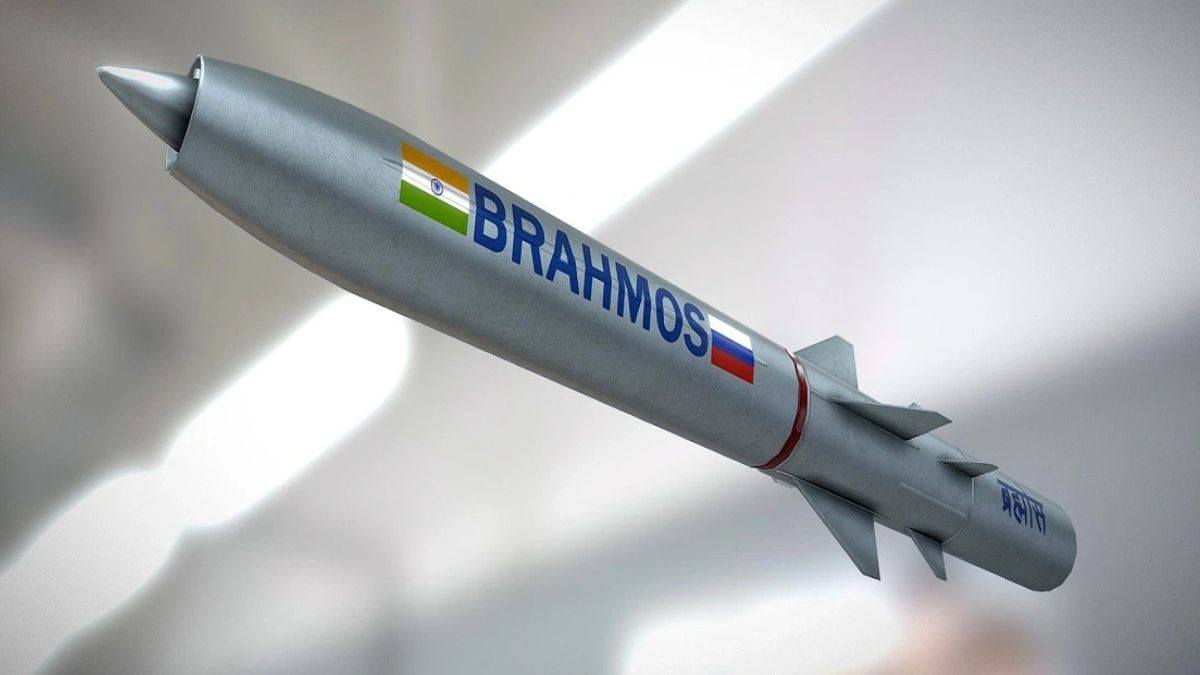Table of Contents
Context: The development of the new Brahmos-NG is in the advanced stage.
The BrahMos missile, a symbol of India’s defence prowess, is one of the most advanced and fastest cruise missiles in the world. Developed jointly by India and Russia, it exemplifies cutting-edge technology, precision targeting, and strategic deterrence. In May 2025, the BrahMos once again made headlines, allegedly being used during Operation Sindoor, a high-profile retaliatory strike against terror infrastructure across the Indo-Pak border.
In this article, we explore the origins, features, capabilities, recent news usage, and future variants of the BrahMos missile.
What is the BrahMos Missile?
The BrahMos Missile is a supersonic cruise missile developed by BrahMos Aerospace, a joint venture between India’s DRDO (Defence Research and Development Organisation) and Russia’s NPO Mashinostroyenia. The missile derives its name from two rivers, the Brahmaputra in India and the Moskva in Russia. It is a precision strike weapon that can be launched from land, air, sea, and underwater platforms.
Key Specifications of BrahMos Missile:
| Feature | Description |
|---|---|
| Type | Supersonic Cruise Missile |
| Speed | Up to Mach 3 (three times the speed of sound) |
| Range | Initially 290 km, now extended to 350–400 km; future variants aim for 800 km |
| Launch Platforms | Land, Sea, Air, and Submarine |
| Guidance | ‘Fire and Forget’ capability |
| Warhead | Conventional (200-300 kg) |
| Accuracy | Circular Error Probable (CEP) of 1–2 meters |
Origins and Development
- The concept of BrahMos originated from India’s need for cruise missiles, which was identified in the early 1990s after observing their use in the 1991 Gulf War.
- An Inter-Governmental Agreement was signed in 1998 between India and Russia in Moscow, leading to the creation of BrahMos Aerospace.
- This joint venture involved DRDO from India and NPO Mashinostroyenia (NPOM) from Russia, with India holding a 50.5% stake and Russia 49.5%.
- The joint venture was named after the Brahmaputra River in India and the Moskva River in Russia.
- The first successful test launch occurred in 2001 from a land-based launcher.
BrahMos Missile Features and Capabilities
| Feature |
Details |
| Design | Two-stage missile: solid-propellant booster + liquid-fuelled ramjet engine |
| Speed | Up to Mach 3 (three times the speed of sound) |
| Range | Originally 290 km, now upgraded to 350–400 km, future: 800+ km |
| Stealth | Low radar cross-section (RCS) and compact structure for radar evasion |
| Guidance | Equipped with ‘fire-and-forget’ system (no post-launch control needed) |
1. Supersonic Speed
The BrahMos travels at speeds of Mach 2.8 to Mach 3, making it significantly faster than subsonic missiles like the American Tomahawk. This speed makes interception extremely difficult.
2. ‘Fire and Forget’ Technology
Once launched, the missile requires no additional guidance, making it ideal for rapid precision strikes.
3. Stealth Design
BrahMos is designed with a low radar cross-section (RCS) and stealth materials, making it less detectable to enemy radars.
4. Versatile Launch Platforms
-
Land-based Mobile Launchers
-
Naval Ships and Frigates
-
Air-based from Su-30MKI Aircraft
-
Submarine Launch Capabilities (under development)
5. All-weather, Day-Night Capable
The missile performs effectively in all weather conditions and during both day and night operations.
Also Read: Difference Between Cruise and Ballistic Missiles
Anatomy of the BrahMos Missile
The BrahMos is a two-stage missile:
-
Stage 1: Solid-propellant booster for initial acceleration.
-
Stage 2: Liquid-fueled ramjet engine sustains supersonic speed throughout the cruise phase. The missile can cruise at altitudes of 10–15 km and descend to just 10 metres in its final phase for precise targeting.
Variants of BrahMos Missile
| Variant | Key Features |
| Ship-Based | Deployed on Indian Navy warships since 2005; supports vertical/inclined launch; salvo firing of up to 8 missiles |
| Land-Based | Mobile launchers with a three-missile configuration, deployed in multiple Blocks:
Range up to 400 km, future variant may exceed 1,000 km |
| Air-Launched (ALCM) | Integrated with Sukhoi-30 MKI aircraft; first test in 2017; effective for land and sea targets; strategic for the Indian Ocean Region |
| Submarine-Launched | Can be launched from 50 meters underwater; tested in 2013 near Visakhapatnam; features canister-based vertical launch |
| BrahMos-NG (Next Generation) | Under development, will be smaller, lighter, and more stealth-capable; designed for aircraft and submarine torpedo tubes; improved ECCM and greater operational flexibility |
Strategic Importance of BrahMos Missile
-
Deterrence Power: The BrahMos missile significantly enhances India’s deterrence capability, particularly in the Indo-Pacific region. It provides India with a credible second-strike capability, essential for maintaining peace and stability in the region.
-
Surprise Attacks: The BrahMos missile’s high speed and ability to be launched from different platforms make it ideal for surprise attacks on enemy military assets, crippling their defenses with little warning.
-
India’s Edge in Regional Conflicts: BrahMos plays a crucial role in India’s regional defence strategy, especially in the context of tensions with neighbours like Pakistan and China. The missile has been used in several operations, including Operation Sindoor, showcasing its effectiveness in cross-border strikes.
-
Strengthening Naval Power: With the deployment of BrahMos on naval platforms, India has enhanced its naval deterrence capabilities. The missile is capable of sinking enemy ships, making it a formidable weapon for naval warfare.
Recent Deployments and Operations
BrahMos has been deployed in several high-profile military operations. The most notable recent use was during Operation Sindoor, where the missile was reportedly used to target military infrastructure in Pakistan, including the headquarters of Jaish-e-Mohammad in Bahawalpur. The strike was highly accurate, causing significant damage to enemy assets and proving the missile’s effectiveness in precision warfare.
The missile’s deployment in such operations demonstrates its ability to neutralise threats while minimising collateral damage. Its strategic impact is especially significant in a region with high tensions and complex geopolitical dynamics.
Future Prospects of BrahMos Missile
The BrahMos missile continues to evolve with ongoing research and development to enhance its capabilities. Future versions of BrahMos will aim for hypersonic speeds (Mach 5+), further extending its range and survivability against enemy defences. The missile will also be integrated into more advanced platforms, including unmanned aerial vehicles (UAVs), ensuring it remains at the forefront of modern defence technology.
Additionally, BrahMos Aerospace is exploring opportunities to export the missile to friendly nations, particularly in the ASEAN and Middle East regions, further cementing India’s position as a global defence leader.
Conclusion
The BrahMos missile has proven itself as one of the most effective and advanced supersonic cruise missiles in the world. With its exceptional speed, accuracy, and stealth capabilities, it provides India with a critical edge in modern warfare. Whether launched from land, sea, air, or submarine, BrahMos has the ability to deliver devastating blows to enemy targets with precision and speed. As India continues to strengthen its defence capabilities, BrahMos remains a key component in ensuring national security and maintaining a credible deterrent against potential threats.


 Advanced Air Defence Radars: Types, Comp...
Advanced Air Defence Radars: Types, Comp...
 Ion Chromatography, Working and Applicat...
Ion Chromatography, Working and Applicat...
 Broadly Neutralising Antibodies (bNAbs):...
Broadly Neutralising Antibodies (bNAbs):...

























